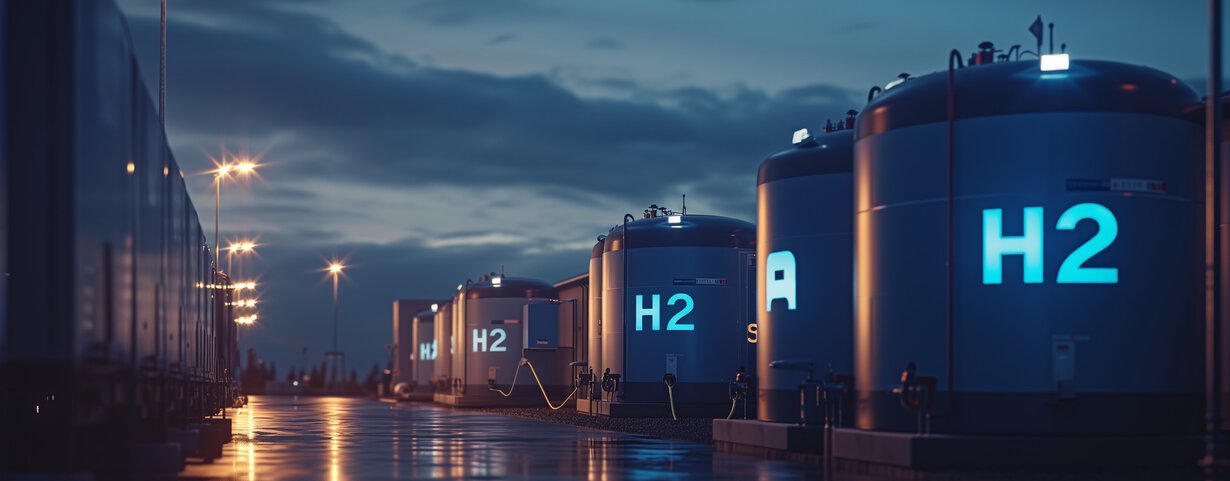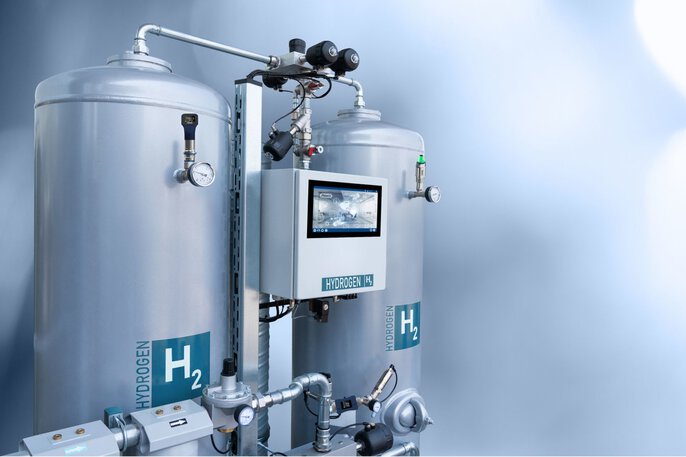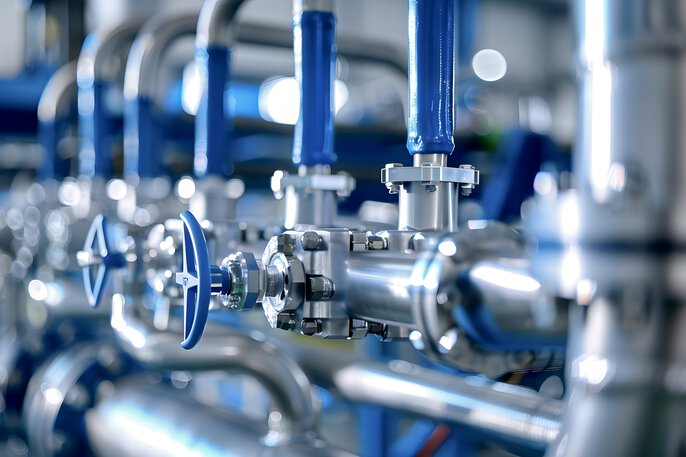

Temperature measurement in liquid hydrogen (LH2): technical requirements for safe cryogenic sensors
Liquid hydrogen (H2) plays a key role in the energy transition, but places extremely high demands on measurement and control systems. In this blog you can read all about the technical requirements for a safe and accurate temperature measurement system suitable for measuring at extremely low temperature conditions.
Hydrogen becomes liquid at a temperature of -252.87 °C. That is just above absolute zero (-273 °C). At this point, temperature measurement systems no longer function under "normal" conditions: standard components fail, materials change composition and safety is immediately compromised.
That is why specialized cryogenic measurement technology is required.
In this blog we will discuss:

Pressurised hydrogen plant with temperature sensor and H2 control in industrial environment
1. Cryogenic temperature range for hydrogen: measuring up to 270 °C
For liquid hydrogen applications, the temperature sensor must be suitable for cryogenic temperature ranges well below -250 °C.
Sensor requirements:
- Measuring range: minimum -270 °C to well above room temperature
- Construction with cryogenically suitable materials such as Inconel, titanium or stainless steel in special alloys
Not all temperature sensors can withstand these conditions. Therefore, choose systems specially designed for cryogenic applications.
2. Accuracy of temperature sensors when measuring in liquid hydrogen
Around 20 Kelvin (-253 °C), hydrogen is particularly sensitive to small temperature changes. A deviation of just 0.5 K can lead to gas formation, with risk of overpressure or explosion.
Requirements:
- Accuracy of ± 0,5 K at 20 K or better
- Use of stable sensor elements such as Cernox or similar cryogenic resistance sensors
3. Pressure-resistant temperature measurement with liquid hydrogen (up to 105 bar)
Pressures of up to 105 bar can occur during storage or transport of liquid hydrogen. The combination of pressure and temperature make the system especially vulnerable.
Requirements:
- Pressure-resistent housing to minimum 105 bar (1500 PSI)
- Certified welds and protective sleeves (thermowells)
- Use of pressure-resistent fittings and flanges
- Construction with cryogenically suitable materials such as Inconel, titanium or stainless steel inspecial alloys

Industrial pipes and valves for temperature and pressure measurement in liquid hydrogen
4. ATEX/IECEx requirements for explosion-proof temperature measurement in hydrogen applications
Hydrogen gas quickly forms an explosive mixture with air. Measuring systems must therefore meet the strictest explosion protection requirements.
Requirements:
- ATEX/IECEx certification for:
- Zone 0 / Zone 1 (gas)
- Zone 20 / Zone 21 (dust)
- Protection forms: Ex i (intrinsically safe), Ex d (pressure-resistent) and Ex e (increased safety)
5. ESD-safe temperature measurements in cryogenic plants
Low humidity and friction in cryogenic plants quickly create static electricity. A small spark caused by ESD (Electro Static Discharge), can be catastrophic in a hydrogen-rich atmosphere.
Requirements:
- Antistatic enclosure and ESD-safe mounting
- Earthing and potential equalisation of the installation
- Selection of ESD-safe sensors and installation materials
6. Suitable materials for cryogenic temperature sensors in hydrogen applications
Extremely low temperatures make materials shrink or become brittle. Electrical properties can also change. Therefore, the right choice of material is crucial.
Requirements:
- Use of Inconel, stainless steel or titanium
- Minimum wall thickness of protective sleeve: ≥ 1 mm
- Pressure-resistent mounting with certified fittings or flanges
- Corrosion resistence for long-term exposure to cryogenic media

Cryogenic temperature sensor from JUMO with H2-ready label suitable for hydrogen applications
In practice: JUMO 903520 sensor for liquid hydrogen applications
The JUMO 903520 is an advanced cryogenic temperature sensor that meets all requirements.
Requirements:
- Measuring range: -270 °C tot +600 °C
- ATEX/IECEx certification: Ex i, Ex d, Ex e, BV, SIL
- Pressure resistance up to 105 bar
- ESD safe construction
- Cernox sensor technology available
This sensor is specially developed for the demanding world of liquid hydrogen. The sensor offers maximum reliability, safety and precision under the most extreme conditions.
Summary — specifications for liquid hydrogen (LH2) temperature measurement
Below you will find an overview of the most important technical specifications for safe temperature measurement of liquid hydrogen (LH2):
| Technical aspects and requirements | |
|---|---|
| Measuring range | -270 °C to +200 °C or more |
| Accuracy | ±0.5 K at 20 K |
| Pressure resistance | minimum 150 bar (1500 PSI) |
| Explosion protection | ATEX zone 0/1/20/21,Ex i/Ec d/Ex e |
| ESD protection | antistatic housing, grounded system |
| Material | cryogenically tested Inconel, stainless steel or titanium |
About the author
My name is Saskia van der Laan and I have been working in content marketing for several years. I like to combine my professional skills with my passion for writing, with the aim of informing and inspiring. Outside of work, I like to walk my dog, I love reading and being active.

Marketing
Saskia van der Laan - Marketing coordinator +31294768050 Saskia.vanderLaan@jumo.net +31294768050

